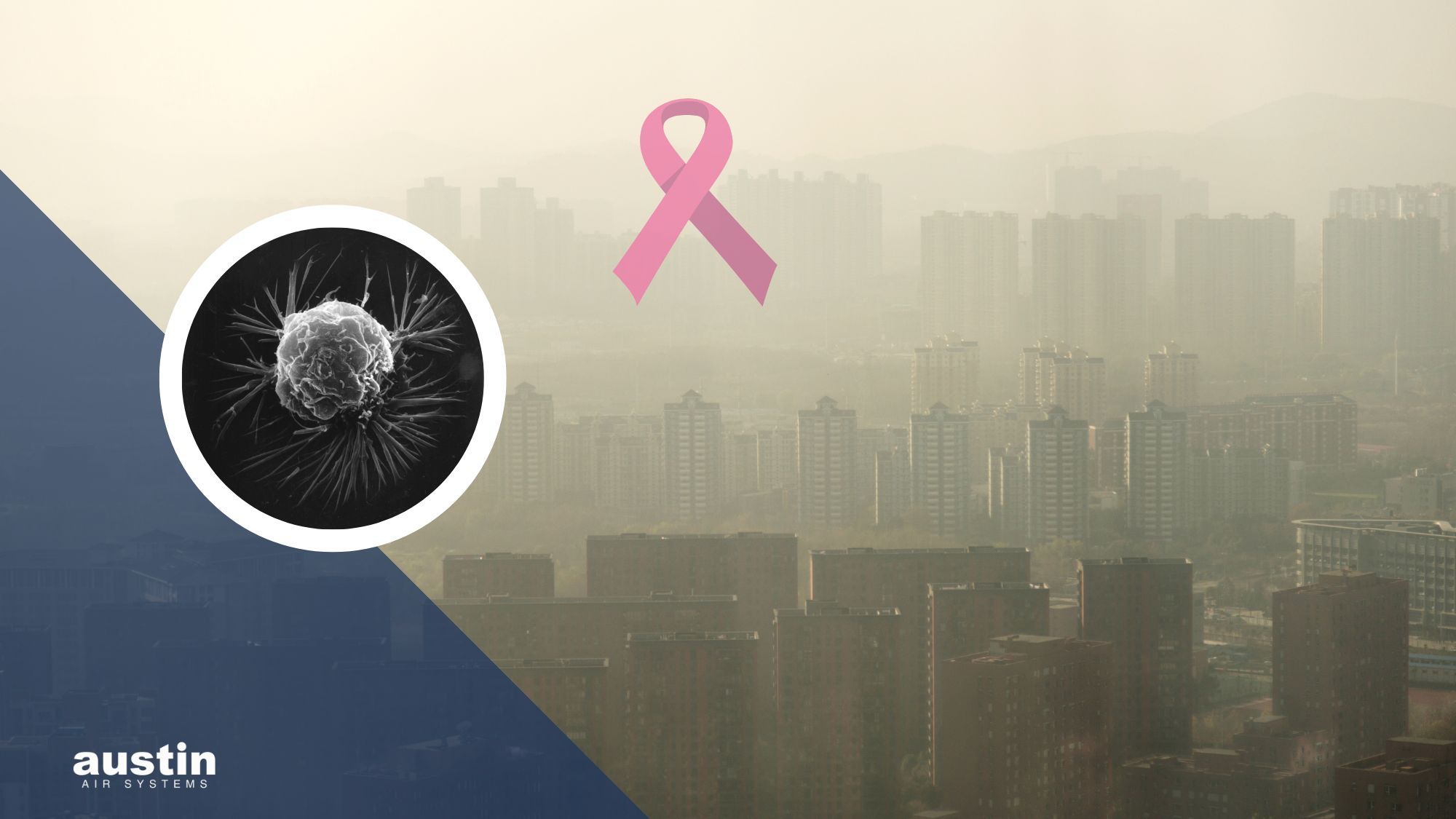Breast Cancer Awareness Month is coming to a close. And while it’s stressful to think about breast cancer, it’s important to be aware that one in eight women will be diagnosed with it in her lifetime. Even men can get it.
That means there’s a good chance someone you know and love will be diagnosed. Perhaps you or a loved one have already faced this horrible disease.
As we continue looking for a cure, it’s vital to understand how to reduce our risk.
For prevention, many try to eat nutritiously and exercise regularly. But one risk factor almost everyone overlooks is air pollution.
Air Pollution Linked to Breast Cancer
Air pollution is a major risk factor for cancer, especially estrogen-sensitive forms such as breast cancer.
A study in the journal Cancer Epidemiology, Biomarkers & Prevention found that air pollution may be implicated in breast cancer. And the risk rises when the disease runs in the family.
The specific air pollutant referenced in this study is the gas nitrogen dioxide (NO2).
This connection between breast cancer and NO2 was also found in a review of 17 studies evaluating the risk of breast cancer associated with air pollution.1
The fact is, exposure to air pollution harms our hormone health, increasing our risk for hormone-sensitive cancers, though we don’t yet know exactly why.2
Sources of Nitrogen Dioxide and Other Airborne Carcinogens
The most significant sources of nitrogen dioxide and other airborne carcinogens are exhaust from cars … and industrial emissions.
Industrial emissions can also contain carcinogens such as vinyl chloride, formaldehyde, and benzene—found in cigarette smoke or wood smoke from fireplaces or wood stoves.
Even when pollutants originate outside the home, they always find their way inside our homes and offices.
How to Protect Yourself and Your Family from Air Pollution
While avoiding outdoor air pollution may be impossible, you can take steps to make sure your home air is as clean as possible.
For one, try not to use scented candles, plug-in air fresheners, or perfumes. These release VOCs (volatile organic compounds) into the air that can cause allergic reactions and harm your respiratory health.
Also, opt for hardwood floors over carpeting. Wash your hands regularly. And use a doormat at the entryway of your home to trap pollutants.
However, the most effective way to reduce indoor air pollution is by using a portable air purifier.
But not just any.
According to an extensive review carried out by the EPA, air purifiers using a combination of carbon and HEPA are the most effective. However, the report noted that there must be a significant amount of carbon and HEPA, which most air purifiers lack.
The Healthmate Plus contains up to 15 pounds of an activated carbon blend specifically designed to remove chemicals and gasses such as cancer-causing NO2.
And not only NO2: exposure to the air pollutant fine particulate matter (PM2.5) also increases the risk of premenopausal breast cancer.
The Healthmate Plus contains 60 square feet of true medical-grade HEPA to capture fine particulate matter.
It even captures formaldehyde, benzenes, and other toxins—-not to mention airborne viruses, bacteria, pollen, mold, dust, dander, you name it…
…removing 99% of pollutants as small as 0.1 microns and 99.97% of pollutants as small as 0.3 microns.
Conclusion
Breast cancer remains a leading cause of death in women, but there’s still hope. We know more about the causes of breast cancer than ever before and can take steps every day to reduce our risks.
It’s important to remember that prevention starts with ourselves and our lifestyle choices—so make sure you’re doing everything possible to stay healthy and protect the people you love!
1 https://pubmed.ncbi.nlm.nih.gov/30271702/
2 https://www.ncbi.nlm.nih.gov/pmc/articles/PMC5973437/
